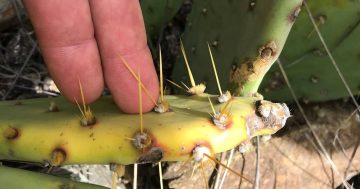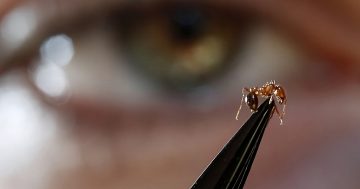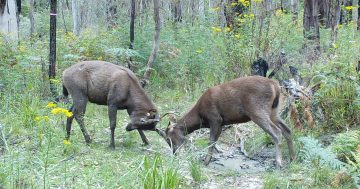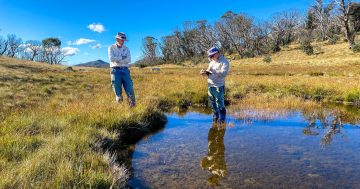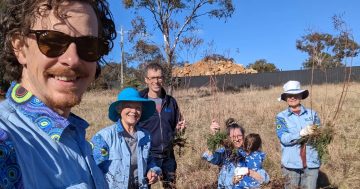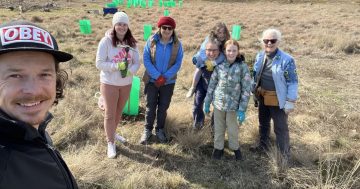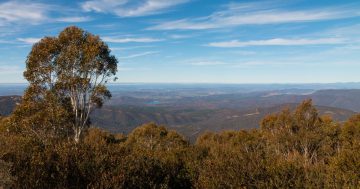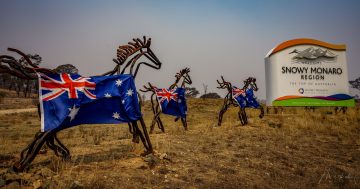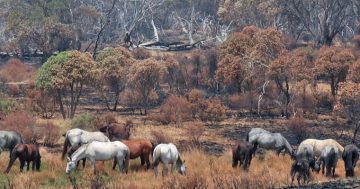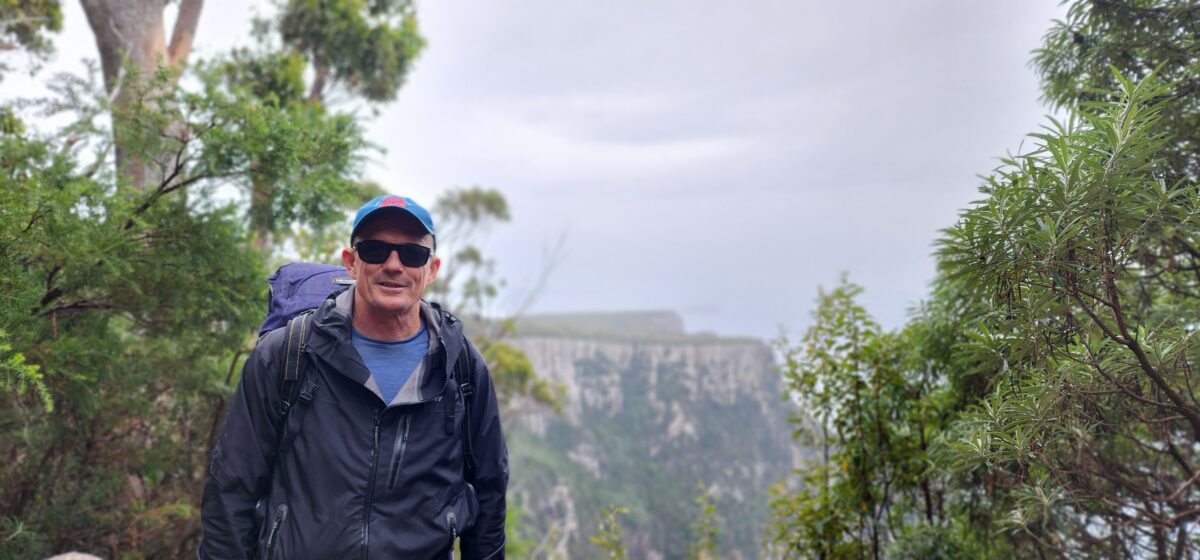
Froggatt Award 2022 winner Steve Taylor from ACT Parks and Conservation out in the field. Photo: Supplied.
ACT Parks and Conservation’s Steve Taylor has won a national Froggatt environmental award for his work in helping to eradicate invasive weeds in the nation’s capital.
The award, presented this week by the Invasive Species Council, is given to people who have made a significant contribution to protecting Australia’s native plants and animals and ecosystems.
The Froggatt Award is named in honour of Australian entomologist Walter Froggatt, the lone voice of caution to the Federal Government in the 1930s about introducing the cane toad into the country to control beetle infestations in the sugar canefields.
At the time, Froggatt wrote that “this great toad, immune from enemies, omnivorous in its habits, and breeding all year round, may become as great a pest as the rabbit or cactus”.
Invasive Species Council CEO Andrew Cox said Mr Taylor, the ACT Parks and Conservation Service invasive plants and plant pests manager, was given the 2022 award for his innovative thinking that led to effective eradication efforts of invasive weeds in the ACT.
He said Mr Taylor’s mapping of the weeds included an invaluable data set spanning 10 years with 330,000 control site records.
“As far as we know, it’s the most comprehensive data set of environmental invasive plant control work for any state or territory in Australia,” Mr Cox said.
“The mapping has set the groundwork for new levels of coordination between national parks staff, contractors and an increasing number of volunteers,” he said.
Mr Taylor said one of the reasons invasive plant control projects failed in 2009 was because mapping was little more than ad hoc, which led to a lack of follow-up control.
He said it was also important to map for early detection, rapid response and control mechanisms.
“When Esri released a field mapping smartphone app in 2014 that allowed easy map sharing, we realised we could solve the problem,” he said.
“All public land managers in the ACT now map on the same app, and that includes rangers, invasive species officers, biosecurity officers, volunteers and contractors.”
He said serrated tussock, one of the most common invasive species in the ACT and surrounding regional areas, could double its infestation size in as little as three years – and spread kilometres in the wind, “so it’s vital to catch any new incursions as soon as you can”.
He said his team had used the mapping to track and guide the removal of nearly all of the serrated tussock at Jerrabomberra Grasslands Nature Reserve, blackberries from Namadgi National Park and had also helped to contain fireweed, Coolatai grass and Mexican feather grass elsewhere.
Mr Cox praised Mr Taylor and the ACT Parks and Conservation Service for their commitment to shareable technologies.
“Steve’s inventive biosecurity thinking, program design and productive collaboration have let the ACT set an example for how to monitor and prioritise invasive plant control across landscapes,” he said.
“This has been recognised by the CSIRO and the University of Canberra, which are now jointly funding a three-year study to use the data to assist with understanding thresholds for triggering control work.”












